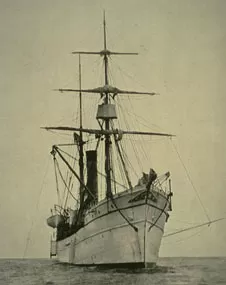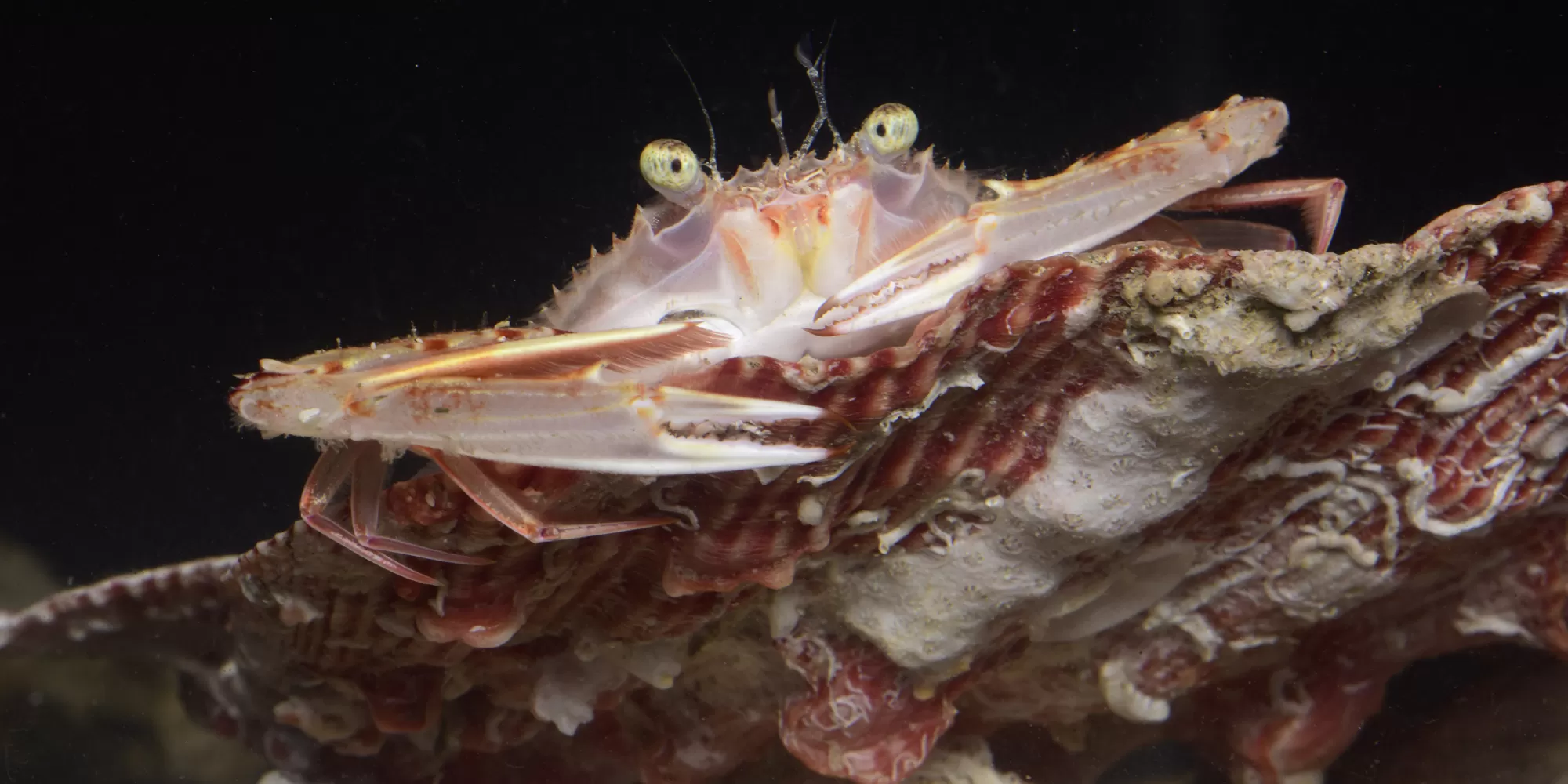
Search

Department of Invertebrate Zoology
About
The Department of Invertebrate Zoology is made up of a global community of scientists making collaborative efforts toward analyzing collections-based material and conducting research in the field.
History of the Department of Invertebrate Zoology
Invertebrate Zoology is one of the oldest scientific units in the Smithsonian Institution. In 1856 – just 10 years after the belated founding of the Institution and 23 years before the first Congressional mention of the United States National Museum – Smithsonian's Assistant Secretary Spencer F. Baird established the "Department of Invertebrates" as headquarters for William Stimpson on the latter's return from the North Pacific Exploring Expedition. Collections from the U.S. Exploring Expedition (aka Wilkes Expedition) were added in 1858. Current holdings are approximately 50 million specimens in over 15 linear miles of storage.
That department was subsequently called the Department of Marine Invertebrates of the Smithsonian Institution. Charles D. Walcott, who was appointed Acting Assistant Secretary of the Smithsonian in charge of the United States National Museum in 1897, proposed a reorganization of that Museum into just three departments – Anthropology, Biology, and Geology – with F.W. True, a marine mammalogist, as Head of the Department of Biology. With the overworked Walcott's resignation in the following year (1898) and his replacement by Richard Rathbun, the tripartite reorganization of the Museum was temporarily suspended.

Eventually, however, the Department of Marine Invertebrates became a division of the Department of Biology. The nominal Curator of that Division was Richard Rathbun, but his younger sister, Mary Jane Rathbun, whose formal education had not extended beyond high school and who had been hired as a "copyist" in 1886, was in virtual charge of the unit for more than 25 of its formative years, even though James E. Benedict – with masters and doctors degrees from Union College in Schenectady and four years as resident naturalist on the R/V Albatross – was appointed assistant curator of the Division in 1899.
Not until the year before her voluntary retirement in 1914 (to provide for the appointment of Waldo L. Schmitt in her place), was Miss Rathbun accorded the title of Assistant Curator, after her retirement she subsequently earned a doctorate from George Washington University.
Dr. Schmitt was appointed Assistant Curator of the Division in 1915 on the recommendation of Leonard Stejneger, who had been appointed Head Curator of Biology in 1911. The Division of Marine Invertebrates was purported to encompass all marine and freshwater invertebrates, as well as related terrestrial groups other than insects, but it eventually spawned two important satellite divisions: the Division of Mollusks (including stony corals and parasitic worms), with Paul Bartsch as Curator, and the Division of Echinoderms, curated by Austin H. Clark. Dr. Schmitt's tenure as Curator of the parent division lasted until 1946, when he succeeded Dr. Stejneger as Head Curator of Biology. Mildred S. Wilson assumed part of the administrative responsibility for the Division when Dr. Schmitt was in the field, reportedly on covert military surveys during the later years of World War II.
In 1946, Dr. Fenner A. Chace, Jr., was appointed to the curatorship of the Division. Immediately upon his appointment as Head Curator, Dr. Schmitt accomplished the establishment of the Department of Botany. Schmitt retired as Head Curator of the Department of Zoology in 1957 and was succeeded by Herbert Friedmann, who resigned in 1961 to assume the Directorship of the Los Angeles County Museum. Dr. Friedmann was replaced, on temporary assignment for less than a year, by Fenner Chace, who who then became senior scientist.
The last Head Curator and subsequently first Chairman of the Department of Zoology was Horton H. Hobbs, Jr., who served from 1962 through 1964. On July 1, 1965, the study of invertebrates and vertebrates was separated at the Smithsonian, and the Department of Invertebrate Zoology was re-established. The first chairman of the new Department of Invertebrate Zoology was Donald F. Squires, who was appointed Deputy Director of the National Museum of Natural History in the following year. Joseph Rosewater succeeded Dr. Squires as Acting Chairman. In 1967, Raymond B. Manning became Chairman of the Department, to be succeeded by David L. Pawson in 1971; by W. Duane Hope in 1975, by Clyde F.E. Roper in 1981; by Roger Cressey, Jr., in 1985; by C.W. Hart, Jr. in 1988; by Brian Kensley in 1991; by Kristian Fauchald in 1995; by David Pawson in 2001; by Robert Hershler in 2003; by Jonathan Coddington in 2004; by Rafael Lemaitre in 2005; by Stephen Cairns in 2008; by Jon Norenburg in 2011; and by Ellen Strong in 2017.
